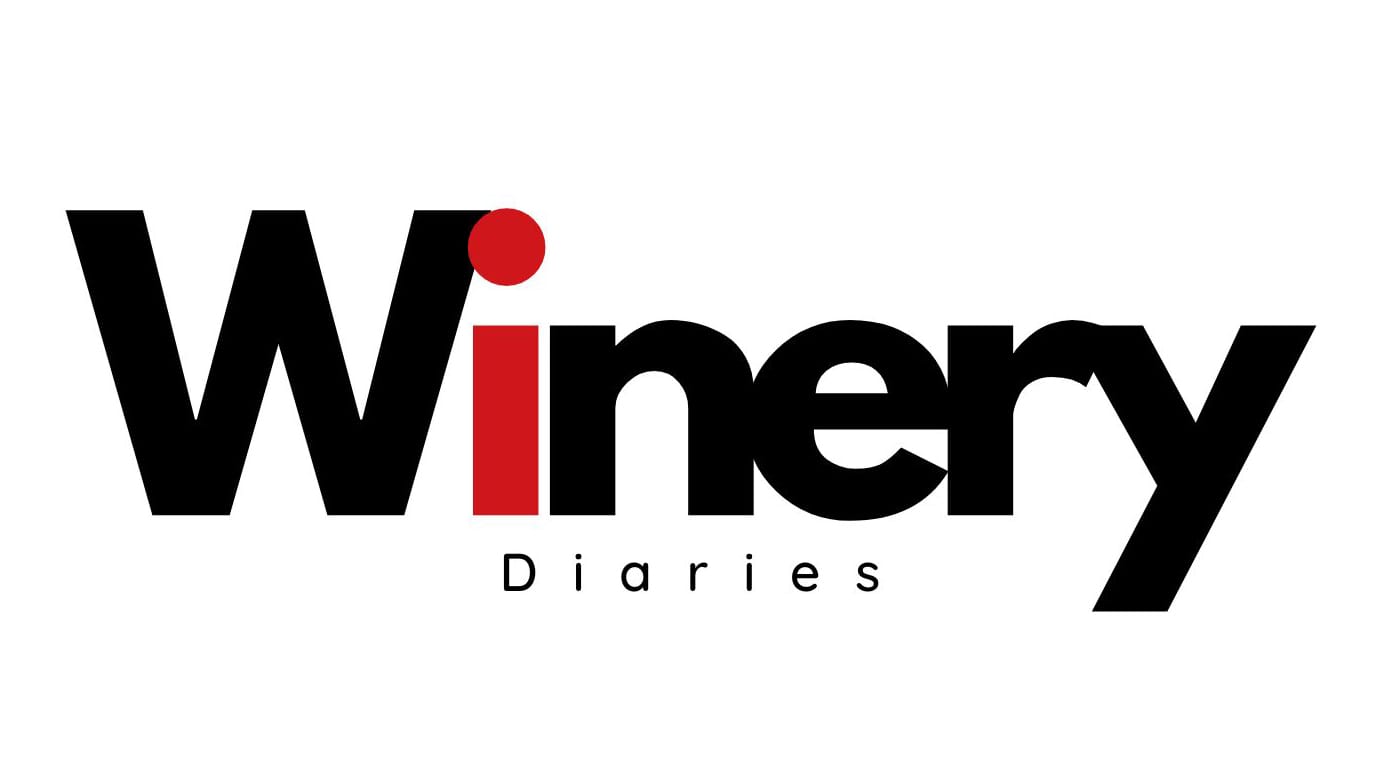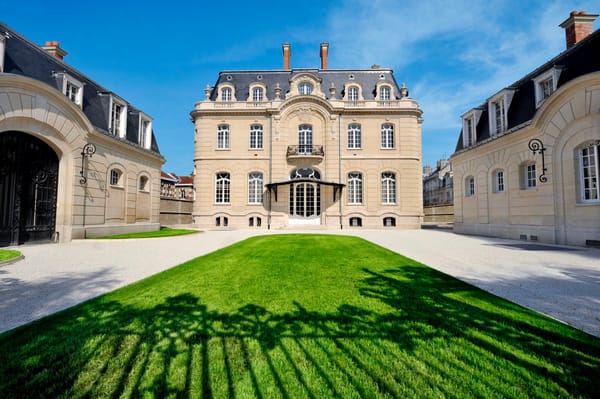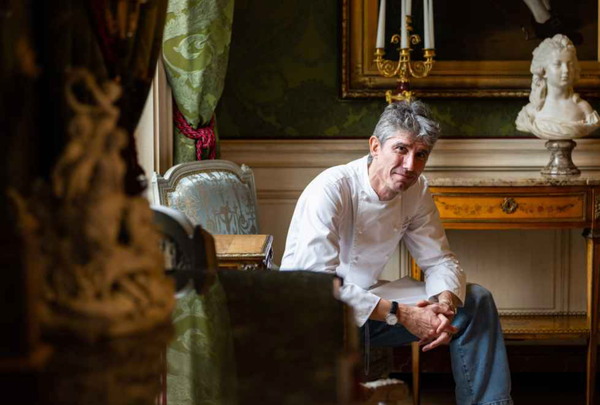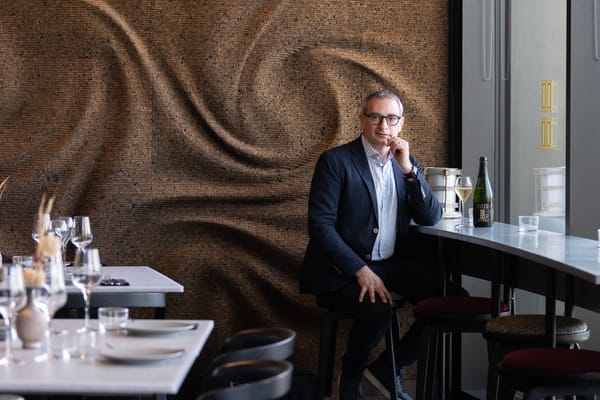Ferrari Trento - Italy's Finest Fizz?
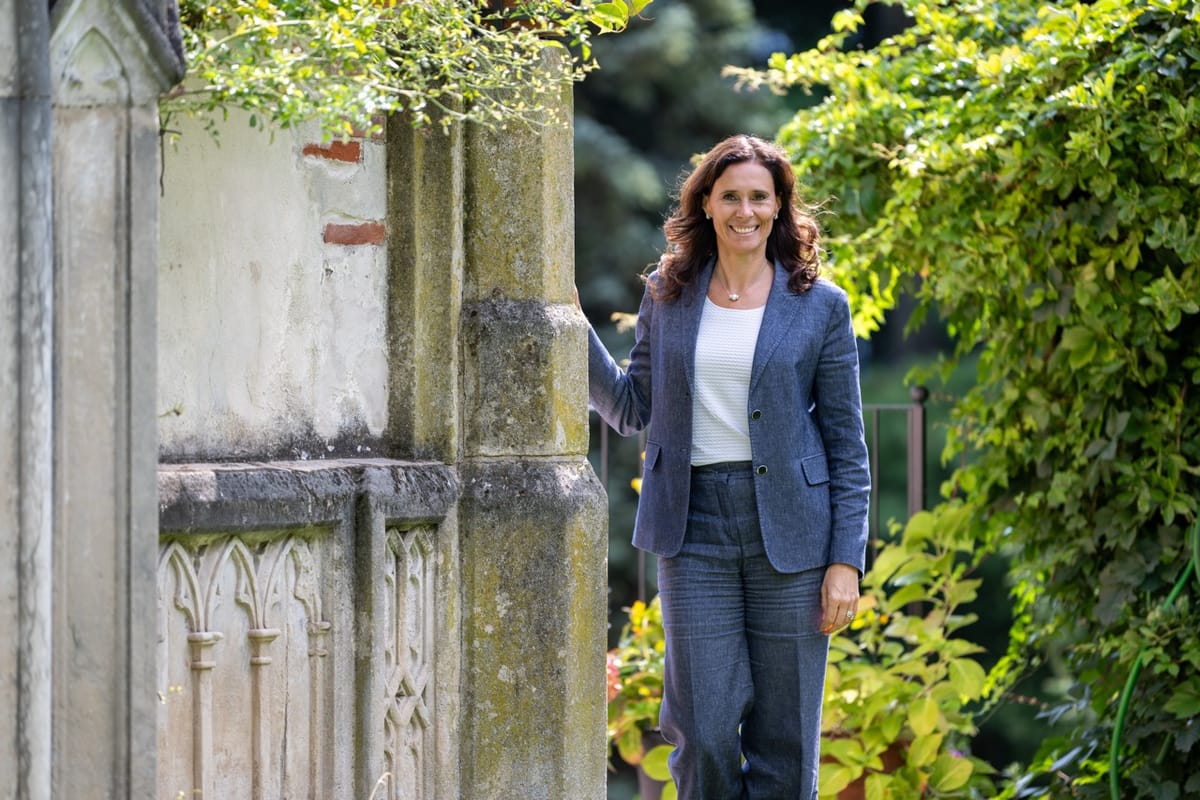
I recently had the privilege of spending a day at Villa Margon, the beautiful heart of Ferrari Trento wines, located just an hour’s drive from the culturally rich city of Verona. Renowned for its Roman-era Arena di Verona, Verona is still a venue for operas and concerts, and its connection to Shakespeare’s Romeo and Juliet. While my previous visits had been centred around cycling along the scenic routes of Lake Garda, this trip was all about the wines of Ferrari Trento.

Founded in 1902 by Giulio Ferrari, Ferrari Trento has been a family-run business since 1952, when Giulio handed it over to the Lunelli family. Under the leadership of the Lunellis (whose business started as a wine shop), the winery has expanded both in scale and prestige. Today, it is part of the larger Lunelli Group, which also owns several other wine and spirits brands.
Giulio had originally been on a trip to the Champagne region. He was struck by the geographical resemblance between it and his native Trentino. On his return, he embarked on a mission to make sparkling wines every bit as good as those he had tasted some 500 miles north. He wasted no time in planting some of Italy’s first Chardonnay vines on the mountain slopes, withstanding the quizzical looks he got from the local winemakers. This was an area known for bulk wine, not potentially world-class sparkling wine.
As mentioned, the estate is located near Lake Garda, Italy’s largest lake, which boasts a temperate climate ideal for viticulture. The lake’s unique microclimate, influenced by warm winds from the Po Valley and cool breezes from the Dolomites, creates near-perfect conditions for growing high-quality grapes. With the estate still being family-run, the Villa is open to the public to appreciate on certain days each week. It is in a beautiful location along a side road that weaves its way up into the hills, allowing you to take in the far-reaching views as you ascend. When you arrive you are greeted by just how beautiful Villa Margon is, complete with 16th-century frescos adorning the walls, both inside and out.
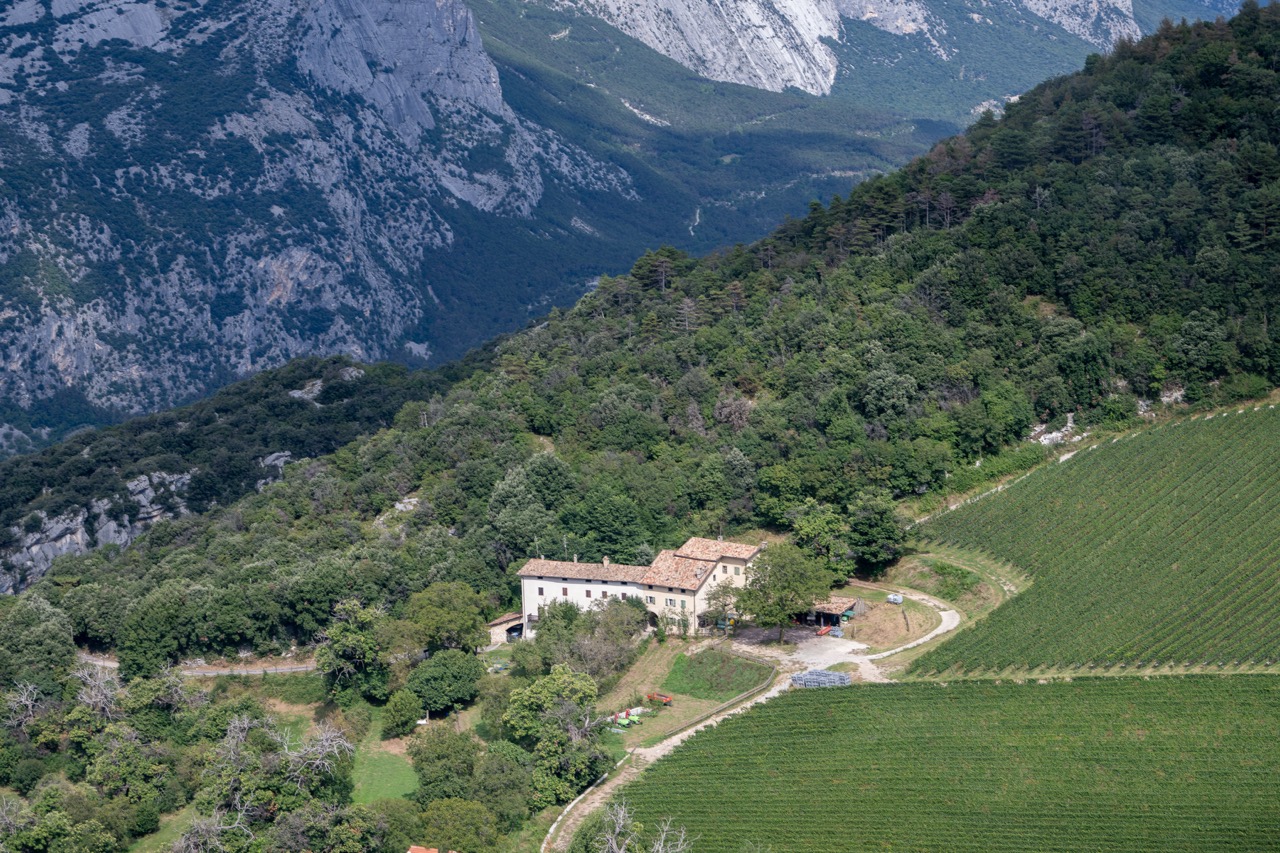
As you step into the villa, you are immediately welcomed by a grand hall, where deep red panels line the lower half of the walls, leading up to a series of Latin inscriptions. Above this, a stunning display of frescoes encircles the room, drawing the eye upward toward the chandelier-adorned ceiling. It was in a side room off this magnificent space that we experienced our first tasting. Looking up, I realized the significance of the setting—twelve frescoes, each depicting the changing seasons in the vineyards and the work that unfolds throughout the year. It was a breathtakingly fitting backdrop to begin our journey into Ferrari’s winemaking legacy.
If you watch Formula 1, you might recognise Ferrari Trento as the official sparkling wine used in the iconic podium celebrations. Despite sharing a name, there's no connection between the winery and the famous Italian car manufacturer (of which I am a huge fan).
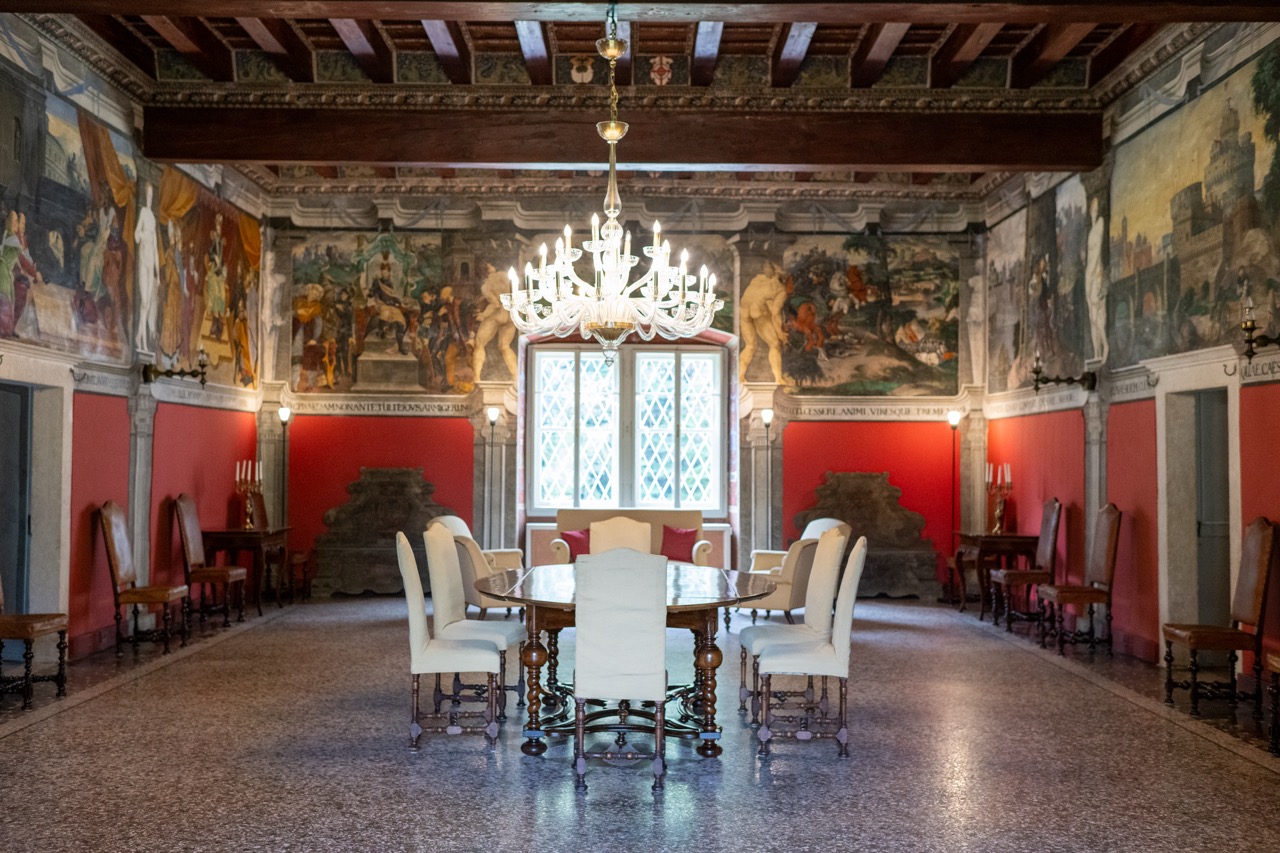
Since becoming the official toast of F1 in 2021, Ferrari Trento’s global presence has surged, especially in the USA, bringing an air of glamour to the brand. But beyond the association with F1, it’s the exceptional quality of the wines that truly sets Ferrari apart. These wines are a world away from the mass-produced Italian sparkling wines, delivering elegance and craftsmanship that reflect the winery’s deep-rooted commitment to excellence.
The company is not afraid of making significant investments in achieving its goal of producing world-class wines. A significant strategic decision was made last year, one that raised a few eyebrows within the wine-making world. Cyril Brun, a highly respected winemaker with deep roots in Champagne, was appointed to oversee their operations as chef de caves. This was a heavy-weight move, with Ferrari Trento’s ability to lure Cyril into the fold, a testament to their current and future intentions.
Previously at Charles Heidsieck, Cyril has taken Ferrari Trento’s winemaking approach, which emphasises the altitude of the vineyards as a defining part of their terroir. His mission is to enhance Ferrari’s established strengths through careful, incremental refinements, concentrating on fine details both in the vineyard and in the winemaking process. Recruiting Cyril might not have been as difficult as you imagine. When asked he confirmed he was aware of the wines and their inherent quality already. When he visited the estate with his wife, the family were sure it was a sign that he was serious about Ferrari’s proposition.
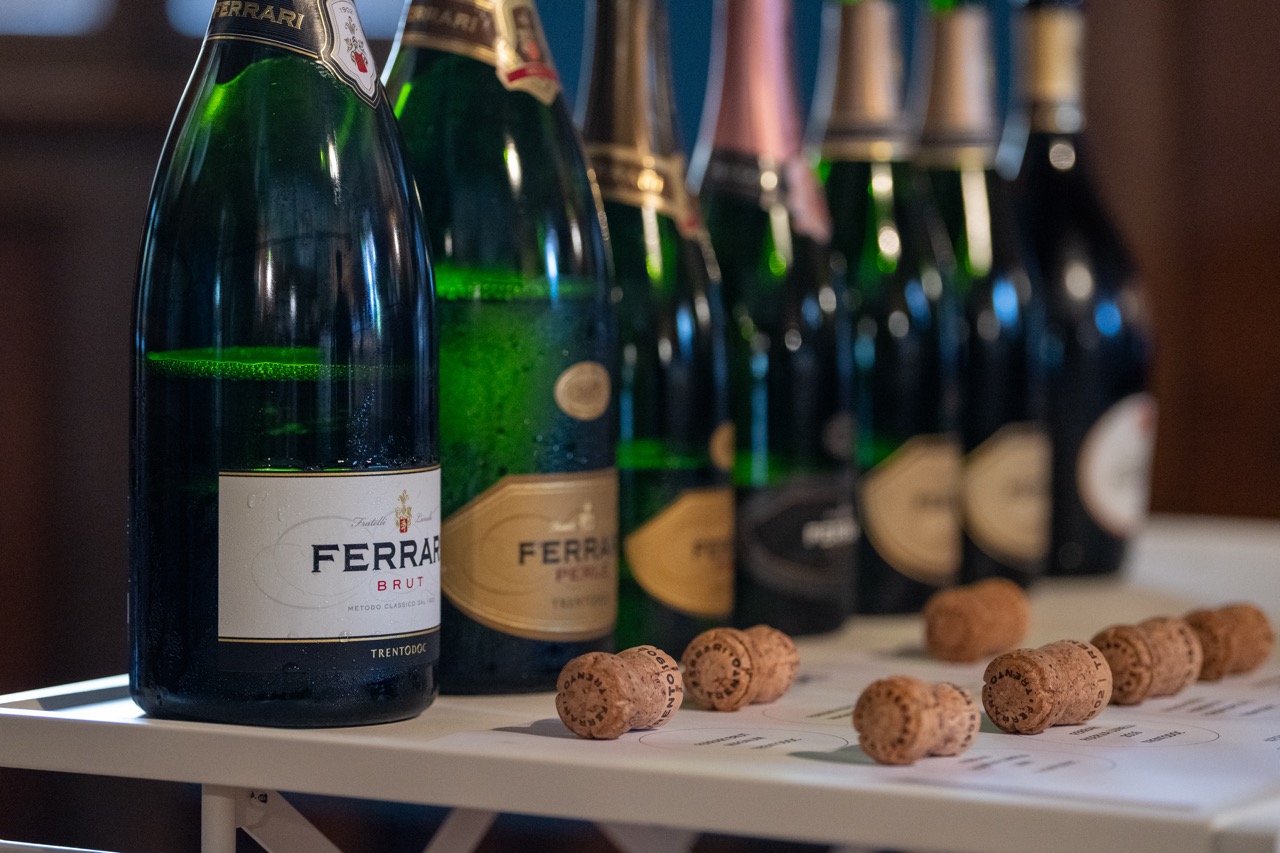
As mentioned, one of the defining features of Ferrari Trento’s vineyards is their altitude. Most are located at heights ranging from 250 to 800 metres above sea level, in the foothills of the Italian Alps. At this altitude, the cooler temperatures help the grapes maintain high levels of acidity, which is essential for producing sparkling wines with crispness and finesse. The emphasis on altitude makes Ferrari Trento’s wines distinct from those produced in warmer, lower regions of Italy. They are made using the traditional Champagne method, giving elegance and depth of flavour. The establishment of the TrentoDOC designation in 1993 proved that Giulio was right all those years ago - this truly was an outstanding area for sparkling wines.
During my visit, I had the incredible opportunity to witness the varying altitudes of Ferrari’s vineyards firsthand—not from the ground, but from the air. The Lunelli family graciously arranged a helicopter tour for me and my fellow guests, offering us a breathtaking aerial perspective. Viewing the vineyards from above gave us a true sense of the dramatic differences in altitude across their terroir, and allowed us to better understand the significant role that elevation plays in the physiological ripening of the grapes.
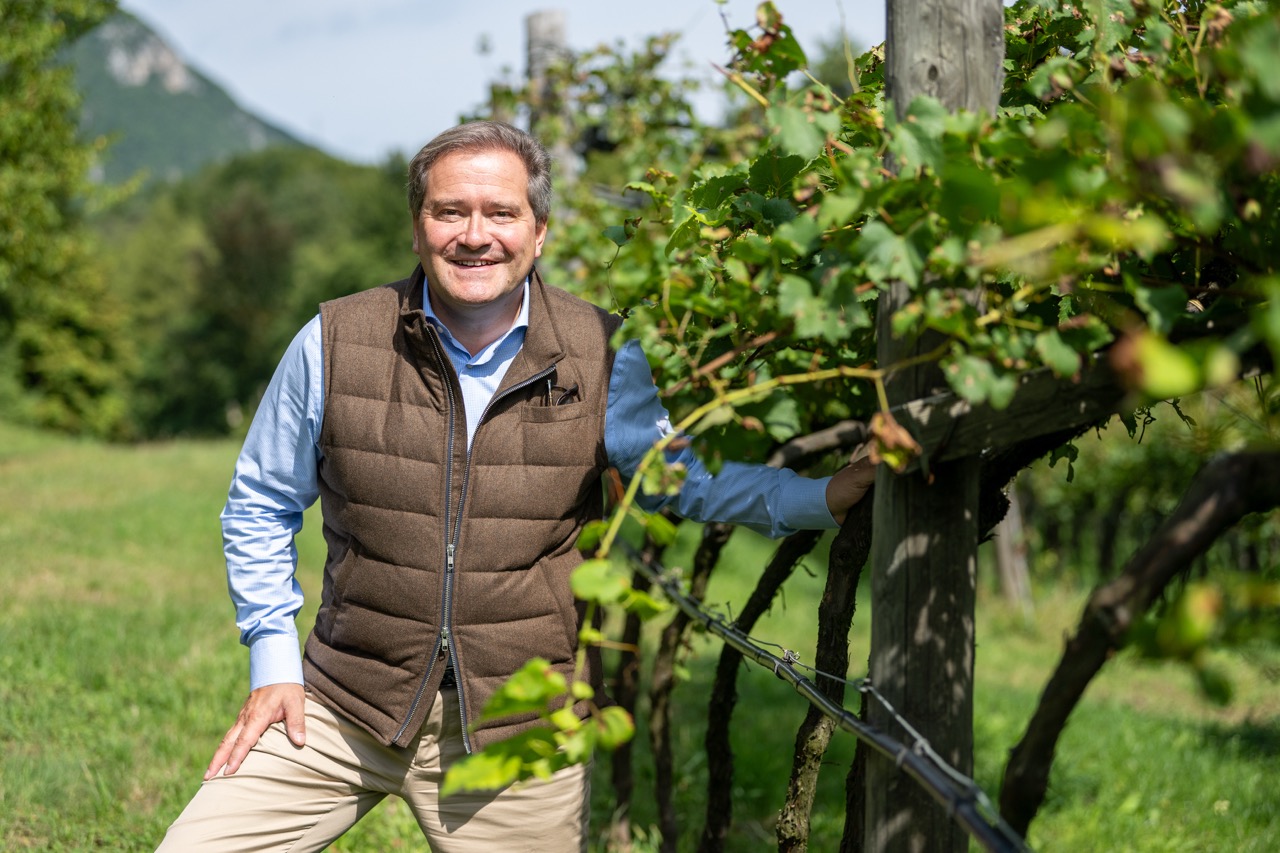
Altitude has a profound impact on the grapes, particularly in how they ripen. The higher the elevation, the cooler the temperatures, which leads to a slower, more gradual ripening process. This, in turn, preserves the acidity in the grapes, contributing to the freshness and elegance found in Ferrari's sparkling wines. Observing these steep slopes and diverse vineyard plots from above provided a deeper appreciation of how Ferrari expertly balances altitude, climate, and soil to craft wines of exceptional quality. It was truly a once-in-a-lifetime experience!
Sustainability is at the core of Ferrari’s winemaking philosophy. All of their own 135 hectares of vineyards are certified organic, and they have implemented protocols for sustainability that extend to their network of independent growers, with a further 600 hectares under vine.
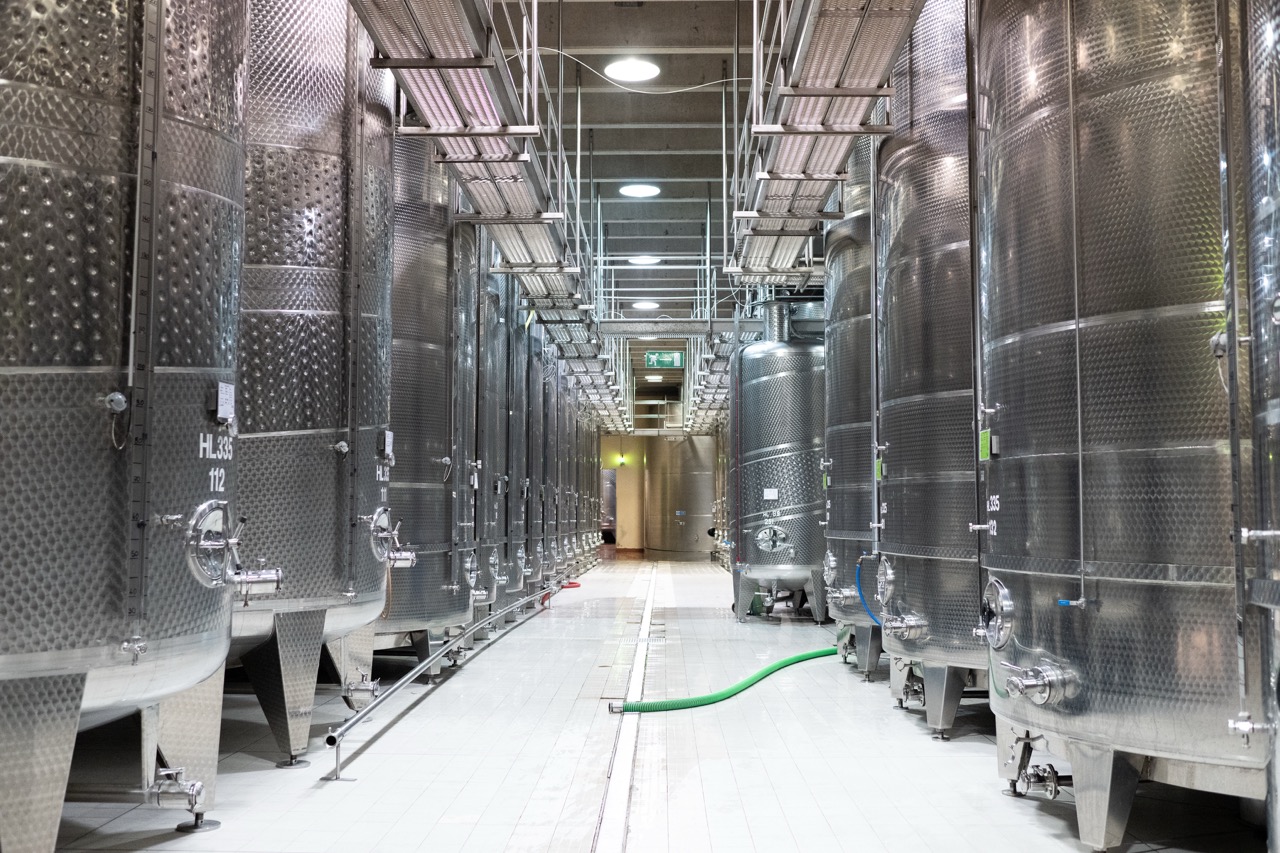
These growers, many of whom have been working with Ferrari for generations, adhere to strict guidelines, including limited use of chemicals, promoting biodiversity, and optimising water usage. The vineyard soil is analysed by taking a cubic metre of soil to ensure it supports a healthy ecosystem. The number of animals and insects are counted to ensure the health of the soil is maintained.
Ferrari Trento uses the Metodo Classico, a winemaking technique identical to the one used in Champagne, where secondary fermentation happens inside the bottle. This traditional process gives their wines a rich complexity and a refined, enduring mousse. The unique combination of high-altitude vineyards, limestone-heavy soils, and cool alpine winds makes the Trentino region highly suited to producing premium sparkling wines, as I was to discover.
The vineyards are located in diverse subregions across Trentino, which helps mitigate vintage variation and maintain consistency in their wines. Central to their wines is Chardonnay, first introduced to the area by the winery’s founder. The Chardonnay thrives in these higher altitudes, delivering the bright acidity that defines the wines’ structure. Smaller quantities of Pinot Noir are also grown, adding depth and weight to the blends. I had an opportunity to taste samples of these, taken from the plethora of tanks within the winery, just after they had been pressed. It demonstrated the quality of the fruit, and how the varying varietals will come together in the future.

One of the unique aspects of their wines was a forced discovery. Ferrari returned home after the 2nd World War and tasted the wines he had made before being recruited. He found that the wines that had stayed on their “lees” had not lost their freshness, but had gained complexity. This extended lees ageing has now become something of a hallmark for the brand’s finer wines.
Sharing lunch and dinner with members of the family was a chance to step into their world, hear firsthand about their work, and see the connection between their lives and the wines they produce. I first enjoyed a light lunch at the Villa, comprising of a mountain saffron risotto with lemons and mortadella from Val di Non. This was followed by seared arctic char, lettuce heart and mountain hutyogurt. It was exceptional and gave a glimpse of what was to come - dinner at their own Michelin-starred restaurant, located on the way to the winery. I freely admit that my excitement levels had been raised significantly.
I was not disappointed. We were seated in the private dining area of Locanda Margon, the Michelin-starred restaurant owned by the estate and nestled in the hills approaching the Villa. We first enjoyed canapes served with Ferrari Perlé Bianco Riserva 2016, then a 4-course tasting menu as detailed below with matching wines.
Potato Foam, Pochè Quail Egg with Black Truffle, Cocoa Crumble, and Red Puffed Quinoa
TrentoDoc Ferrari Perlé Nero Riserva 2017
This was a delicate interplay of textures and flavours, beginning with the light, airy potato foam that acted as a canvas for the more intense elements. The richness of the quail egg, elevated by the earthy notes of black truffle, contrasts with the crunch of cocoa crumble and puffed quinoa. Paired with the Ferrari Perlé Nero Riserva 2017, with its wine’s structured minerality and persistent perlage enhanced the complexity of the dish while complementing the savoury truffle and quail egg.
Char Roe and Turnip Pasta Buttons, Consommé of Roasted Char Bones, Infusion of Ciuiga from Banale
Giulio Ferrari Riserva del Fondatore 2012
A more intricate dish, these pasta buttons reflected the alpine region’s dedication to local ingredients. The consommé of roasted char bones gave a layer of richness that worked really well with the robust flavours of the ciuiga, a traditional sausage from Banale. The Giulio Ferrari Riserva del Fondatore 2012, regarded as one of the finest expressions of TrentoDoc, gave a depth of maturity to the pairing. With its creamy texture and notes of brioche, toasted almonds, and citrus, it worked very well.
Old Rendena Cow's Fillet, Picked Mushrooms, Porcini Cream, and Beef Jus
Tenute Lunelli Carapace 2019, Montefalco Sagrantino DOCG
A standout dish for me, the Rendena cow’s fillet had a rich, beefy flavour complemented by the earthy mushrooms and the creaminess of porcini. The beef jus bought it all together. Paired with the Tenute Lunelli Carapace 2019, a powerful Montefalco Sagrantino DOCG, the wine’s bold tannins and deep concentration of blackberry and spice effortlessly matched the richness of the beef and mushrooms. The intensity of the wine, aged in oak for 24 months, was outstanding.
Liquorice Root, Goat Yoghurt, and Traditional Balsamic Vinegar
This dessert took a more adventurous turn for me as I am not a fan of liquorice. The sharpness of goat’s yoghurt was softened by the sweetness of the balsamic vinegar. The subtle bitterness of liquorice root tied the elements together, creating a palate-cleansing end to the meal.
Ferrari Trento Tasting Notes
Trentodoc
The signature wine of Ferrari, Trentodoc is made predominantly from mountain-grown Chardonnay, which gives it a vibrant freshness. Expect aromas of fresh lemon and white apricots, alongside hints of green apple. The wine is medium-bodied with fine, persistent bubbles that lend a creamy mouthfeel. This style reflects the classic elegance of Ferrari’s sparkling wines, accounting for around two-thirds of their production.
Trentodoc Magnum 2017
A richer and more complex expression, the 2017 Magnum offers a nose of vanilla and citrus, backed by a depth of flavours that unfold beautifully on the palate. The wine retains a balanced acidity and showcases Ferrari’s hallmark long, persistent finish.
Ferrari Perlé 2018
This vintage presents a delicate, floral nose, reminiscent of wild meadows. Despite spending 6-7 years on the lees, the wine remains soft and fresh, with the structure to continue ageing. Its has fine bubbles and a vibrant acidity making it delicious!
Ferrari Perlé Rosé 2017
The Perlé Rosé has a salmon-pink hue, achieved through 15 hours of cold maceration under CO2 to prevent oxidation. The blend consists of 20% Pinot Noir rosé, 70% Blanc de Noirs, and 10% Chardonnay. Regular monitoring (every 30 minutes) during maceration ensures that the wine develops its signature flavour profile without any bitterness, resulting in a harmonious and refined rosé
Riserva Lunelli 2016
Yet to be released the 2016 Riserva Lunelli is made from 100% Chardonnay and undergoes its first fermentation in oak barrels. The result is a beautifully integrated oak influence, making the wine incredibly soft and food-friendly. With a nose that invites pairing with cheese or mushroom risotto, this wine showcases Ferrari’s ability to create sparkling wines with depth and character
Riserva Lunelli 2009
This 2009 has a youthful, complex nose with a rich bouquet of peach and cream. It had lively acidity and vibrant fruit flavours. I found it hard to believe it was 2009 as so fresh and full of youthful flavours. Outstanding.
Giulio Ferrari Riserva del Fondatore 2015
The epitome of Italian sparkling wine, this Riserva del Fondatore, yet to be released, showcases delicate yet deep flavours. Hints of hay and subtle oak create a well-managed balance, marking this wine as a reference point for méthode classique sparkling wines in Italy.
Giulio Ferrari Rosé 2012
Mineral-driven and fresh, this had flinty and soft red fruit notes on the nose. The high-altitude vineyards where the grapes are grown contribute to its slower maturation, lending the wine impressive ageing potential. Its balance of minerality and acidity makes it delicious.
